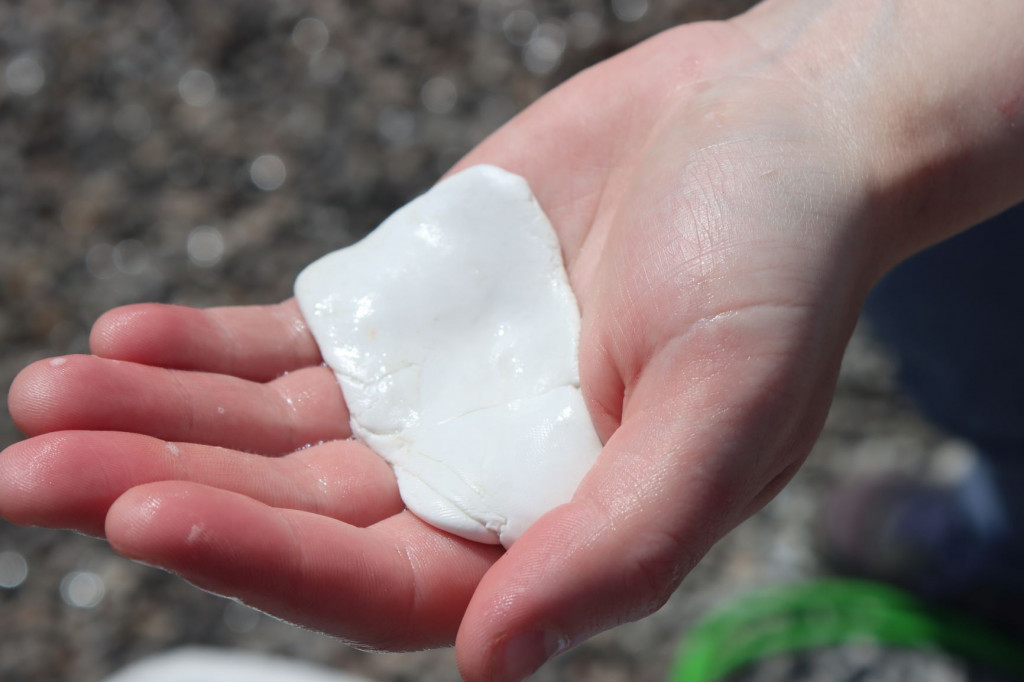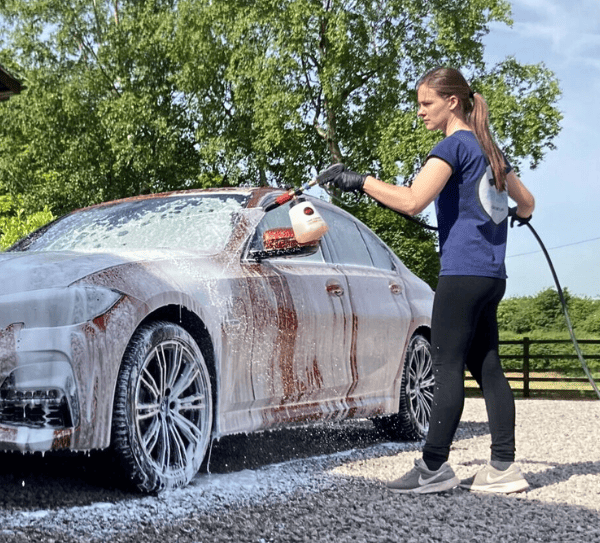If you’re getting into detailing, then you may have heard about claying your car using a clay bar or mitt. It’s a great way to remove contaminants that are bonded to your paint’s surface to give it a smooth and squeaky clean finish. But how often should you use a clay bar?
In this article I’ll be discussing everything you need to know to decide how often your car needs claying, and the pros and cons of using a clay bar on your car frequently. So let’s get started.
The Quick Answer
Most cars need to be clayed once per year. However, the exact frequency depends on how much your car is exposed to contaminants. You may to use a clay bar more if your car is driven daily and parked outside. However, it is not recommended to clay a car more than twice per year.
You can check if your car needs to be clay barred by running your hand over freshly washed paintwork. If it feels rough, then it’s time to clay.
Why Do you Need to Use a Clay Bar?
Every day, your car is exposed to various contaminants like iron fallout, dust, tar, tree sap and bird mess. These contaminants settle on your car’s paint and bond to it, so they won’t be removed with routine washing.
Instead, you’ll need to clay your car using a clay bar or mitt. You simply glide the clay bar or mitt over the surface of a freshly washed car using a lubricant to lift these contaminants away.
Claying your car is important to prevent damage to your paint’s finish leading to dulling and roughness.

Things to Consider
How often you need to clay your car depends on quite a few different factors. Ultimately, it comes down to how many contaminants your car is exposed to, and how long for.
There’s no hard and fast rules when it comes to claying frequency, so it’s important to consider the following things.
- How often do you drive it? The more often a car is driven, the more contaminants it will be exposed to, particularly brake dust.
- Is it stored inside or outside? Storing your car outside will expose it to more contaminants like tree sap, bird mess and iron fallout.
- The environment. If you live in a dusty area, or down the road from an industrial estate, then you’ll need to clay bar your car more often.
- How often you wash your car. The longer the dirt sits on your car before you wash it, the more time it has to bond to your paint, so it can only be removed by claying and won’t be removed by routine washing.
- Your paint protection. The better the sealant or wax is, on your car, the less your car will need claying because the contaminants have a harder time bonding to the surface.
How Do You Know When It’s Time to Clay?
Okay, so knowing what affects the frequency you need to clay is important, but how do you actually decide when it’s time to clay your car. Well luckily, there’s actually a really simple test you can do that takes less than a minute.
Here’s how you check if your car needs claying.
- Make sure your car has just been washed and dried.
- If the paint feels rough, then it’s time to clay.
Super simple right?
Some areas may need claying more often than others. It’s likely the lower sections behind the wheels will need claying more often than the bonnet for example, although it does depend on the conditions in which the car is driven and stored.
You Don’t Have to Clay the Whole Car
If you’ve been driving 1000 miles per week in awful winter weather with snow, slush and grit salt, then you might actually need to clay your car that frequently.
However, in some cases, the whole of your car might not need claying. There are certain areas of your car that are more prone to contaminants than others.
Usually, the roof of your car will need claying less frequently than the rest of your car, unless you park under trees and expose your car to bird poop and tree sap.
The areas of your car that get dirtiest will need claying more. Usually, it’s the lower sides of your car.
Can you Clay a Car Too Much?
It’s definitely possible to clay your car too much. Clay is an abrasive, which can damage the paint causing swirls and marring. You can minimise this by using a clay lubricant and a softer form of clay, however, you can’t forget that clay is still an abrasive.
Make sure you check out my guide to the best clay bar lubricants to make sure you choose the right option to minimise any marring and swirls that may be inflicted by the clay.
That means, that if you clay your car every few month, you’ll be collecting scratches, swirls and marring in the paintwork.
The only way to remove these paint defects is by polishing, which actually removes a layer of paint. The issue here is that your car only has a certain amount of paint so it’s not a good idea to go through the cycle of claying and polishing frequently otherwise you’ll run out of paint!
But what if you need to park your car outside, drive it every day, and it’s exposed to industrial contaminants and iron fallout? What do you do then?
Of course, if your car really needs claying, you should clay it. However you really need to make sure you use a very soft clay to minimise the abrasion, and you use a lot of clay lubricant.
You can actually do a couple of things to reduce the frequency you need to clay.
- Wash your car more frequently. To reduce the level of contaminants on your paint’s surface, you can wash your car more often to prevent them from actually bonding to your paint. Contaminants only bind when you give them time too, so consider upping your wash frequency to avoid claying too often.
- Use a ceramic coating or high quality sealant. To further prevent contaminants bonding to your car’s paint, you can use use better paint protection. Ceramic coatings and quality sealants prevent contaminants bonding to your paint, so they can be removed through routine washing instead.
- Wash the car using a decontamination shampoo. I personally use the Garage Therapy Decontamination Shampoo a few times a year as this gives the car a deeper clean than regular shampoos so helps to decrease the frequency I need to clay.
Make sure you check out my complete guide to claying to learn some essential tips to make the process safer and more effective.
Thanks for reading! I hope you’ve found this article helpful. Don’t forget to check out the blog to learn more about making your car look it’s best!

